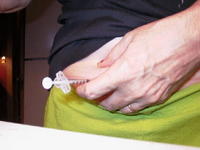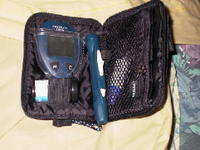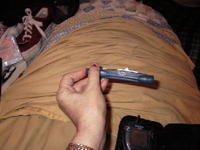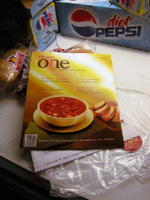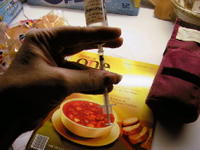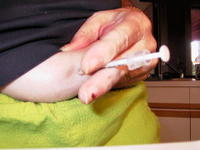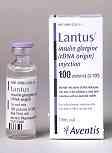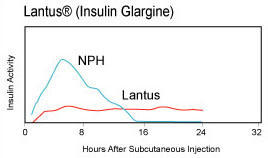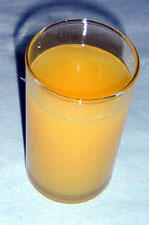 I find mammograms interesting because they say a lot about medicine. The breast, as the object of examination, is manipulated as if it were an independent part of the woman's body. This fragmentation is accentuated by the fact that the surface where the breast is placed is usually cold. The woman is placed in a position relative to the x-ray machine which is tantamount to contortion, as the breast, the focus of the procedure, is pulled away from the body and placed rather aggressively on the cold, hard surface. Finally, the breast is compressed between two plates up to the point of discomfort, which the technician asks about in an effort to get the most squish up to the point of the victim's tolerance.
I find mammograms interesting because they say a lot about medicine. The breast, as the object of examination, is manipulated as if it were an independent part of the woman's body. This fragmentation is accentuated by the fact that the surface where the breast is placed is usually cold. The woman is placed in a position relative to the x-ray machine which is tantamount to contortion, as the breast, the focus of the procedure, is pulled away from the body and placed rather aggressively on the cold, hard surface. Finally, the breast is compressed between two plates up to the point of discomfort, which the technician asks about in an effort to get the most squish up to the point of the victim's tolerance. Thus, the breast almost behaves as an independent entity during the test. The woman is separated from the breast. That is what fragmentation is in medicine. Another example is a Pap Smear, in which the focus becomes the uterus. In this vaginal exam, the woman is even shielded from that part of her body when a drape is laid over her knees. I had a gynecologist once who seemed to recognize me, finally, when he got down in front of my uterus, as though my cervix had my name on it. Once, as I was getting ready to leave, he quipped, "She stands up. She wears clothes." A patient not laying on a table with feet up in stirrups was something remarkable to him.
Thus, the breast almost behaves as an independent entity during the test. The woman is separated from the breast. That is what fragmentation is in medicine. Another example is a Pap Smear, in which the focus becomes the uterus. In this vaginal exam, the woman is even shielded from that part of her body when a drape is laid over her knees. I had a gynecologist once who seemed to recognize me, finally, when he got down in front of my uterus, as though my cervix had my name on it. Once, as I was getting ready to leave, he quipped, "She stands up. She wears clothes." A patient not laying on a table with feet up in stirrups was something remarkable to him.There is an obvious effort to make the mammography procedure more comfortable. At my "Breast Clinic," the waiting room is decorated with homey brightly colored furniture, almost cushy. There is a valence across the top of the window which faces the hall. In one corner (much to my delight) is a real desk with a computer on it, with Microsoft Explorer up and ready to go. A couple of times in the past, there has been a stuffed dog laying on the cold surface where the breast is compressed, in an attempt to warm it up. I have since learned that there is a market for mammogram warmers -- an attempt to make the experience more comfortable.
Perhaps these measures are meant to encourage women to have their breasts examined every year. It sure beats a cold waiting room, but the comfy waiting room environment ends when the woman enters the examining room. There, everything is functional, and there is no doubt that the breast at the "Breast Clinic" is an entity unto itself. "It stands up. It wears clothes."








